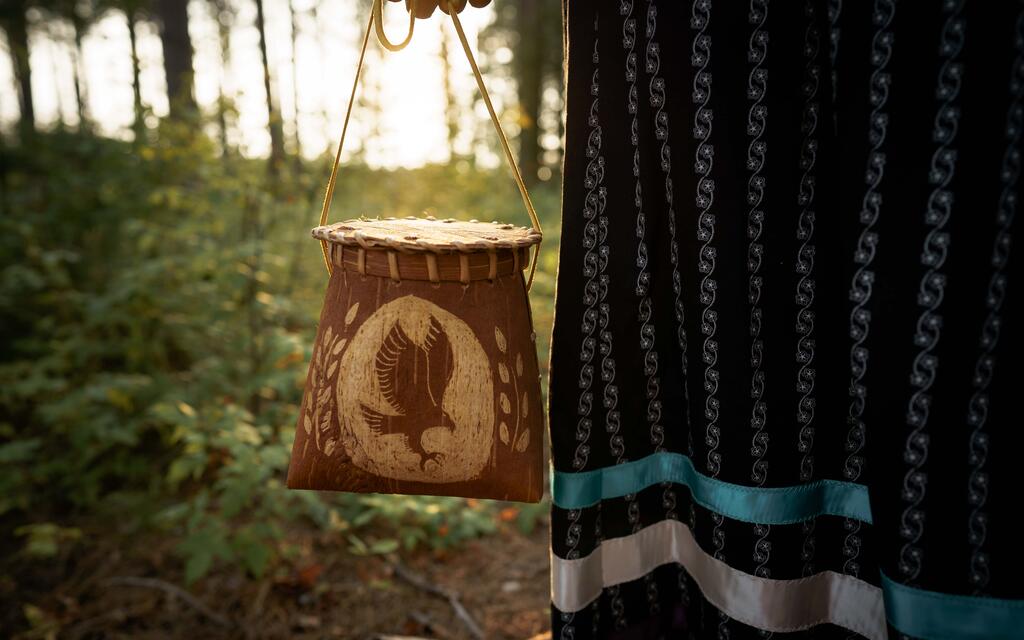This content is part of the broader Our Connections campaign, and is intended to broaden the understanding of Indigenous peoples, their cultures, and their histories in Ontario’s Highlands.
-
Amber Hein is Algonquin Anishinabek, an original inhabitant of Turtle Island, known today as North America. Read her perspective on how to give back to the land to further your connection.
Since time immemorial, First Nations peoples have lived in harmony with the land. We consider the land, water, and all the plants and animals to be our relatives, and that both humans and animals have an equally important role in creation. Incorporating thinking about giving back to the land is innate for First Nations peoples and ensures we maintain the sacred balance and connection between the earth and ourselves.
People often ask how they can also give back to the land in a respectful way. Read on for more information about how you, too, can embrace giving back to the land in your daily life.
Decolonize your Relationship with the Land
First Nations peoples do not look at the land as a means for wealth, but instead as our mother, whom we have an inherent responsibility to protect. To gain a different perspective and relationship with the land, try learning how to identify native species and educate yourself on their importance to the ecosystem. Learn to look at the land not as a means of profit, but as a means of growth and learning.
Practice Good Land Stewardship
When you visit, leave only footprints. Volunteer your time by collecting trash, planting seeds, or donating money to organizations that do this work. Educate and promote land stewardship in your daily lives.
Reduce your Carbon Footprint
Give back to the land by decreasing the amount of waste you produce as an individual or household. Some ways you can reduce waste are to ditch bottled water, buy local produce or grow a garden, start composting or upcycle items when possible. Small steps add up to big leaps in preserving the earth.
Reciprocal Foraging
Foraging for food or plant has become more popular lately, but it’s important that we do so in a good way. First Nations’ cultures often show respect for the plant by offering traditional medicines and by speaking out loud and asking the plant for permission before taking.
Ensure that you have good intentions and say thank you. If certain plants are being over harvested because of trends, do not forage for it. With this mindset we take care of the land so it can continue to take care of us.
Sustainable Foraging
Before you head out, make sure to do your research on the species for which you are looking. Know how to properly identify and when in doubt, do not pick! Take only what you need; a good rule of thumb to follow is to only carry out what can be held in two hands.
Be mindful if you come across an area where the plant looks scarce, leave it be and try to find a better spot to forage. For certain plants, like wild leeks or ramps, it is important to only take the leaves and not the roots! This way the plant will be able to regenerate for future use.
Support Land and Water Defenders
First Nations peoples across Canada have been stewards of this land since time immemorial. Today, land and water defenders are protesting colonization tactics such as unwanted developments and extractive industries. These defender are on the front lines literally risking their lives to protect the earth and responding to climate crisis.
Land defenders often have costs associated with incarceration and or legal fees for protecting their inherent indigenous rights on stolen land. Monetary support of grass roots initiatives facing continued oppression by government systems, the RCMP and other government funded organizations can be helpful. Here is a short list of some of these initiatives which take donations:
Land Back
Land Back is an Indigenous-led movement to reclaim stewardship over traditional lands and ecosystems. This movement is in response to Canada’s history with the removal of First Nations peoples from the land that once sustained them.
In some areas of Canada, treaties were signed between First Nations and the Crown that agreed to share the land and waters. In a lot of cases, these treaties were broken. Some First Nations did not sign treaties, which was then taken without consent.
We need to normalize giving back parcels of land to First Nations. Research instances where private land owners returned land to First Nations and consider this form of reconciliation. Land back also goes beyond the physical transfer of land deeds and includes respecting First Nations hunting and fishing rights, preserving languages and customs, food sovereignty and so much more.
-





